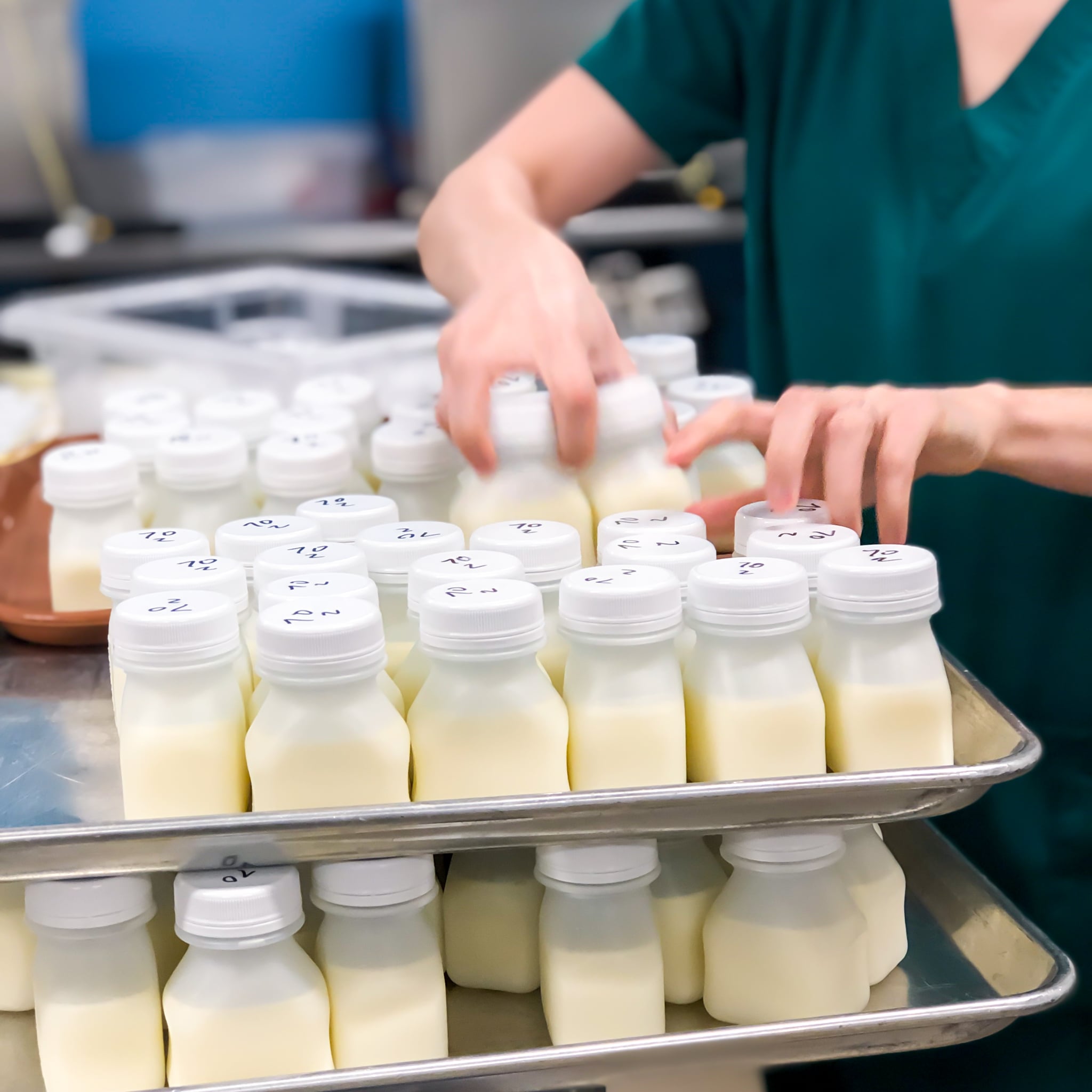Every year, 60,000 babies are born in the United States weighing 3.5 pounds or less.

Fewer than half of those babies’ mothers are able to provide them with breast milk. Through donor human milk, these medically-fragile babies receive the benefits of breast milk that help them grow and thrive.
How much donor milk would be needed if all preterm or ill infants in the U.S. received human milk? Dr. Sonny Rivera, Director of St. David’s Medical Center’s NICU in Austin, TX, and one of two founders of Mothers’ Milk Bank Austin, created a mathematical model for answering this question, and presented the results during the welcoming address of the second day of the 2007 HMBANA conference.
Inputs to the model:
- 4,100,000 babies are born each year, according to the National Center for Health Statistics
- 60,000, or 1.45% of those born weigh less than 1,500 grams
- 51,000, or 84% of those born under 1,500 grams will survive
- 51,000, or 100% of those born under 1,500 grams and surviving will have better outcomes if fed human milk
- 50% of milk needed for these babies will be provided by their own mothers
Model assumptions:
- Mean birth weight = 1,000 g
- Target weight = 2,000 g
- Average hospital weight and feeding prescription = 1.5 kg x 60 ml/kg/day = 240 ml/day
- Average weight gain = 15 g/kg/d or 22.5 g/day
- Time needed to grow to 2,000 g = 44 days
Model conclusions:
- Milk consumed per baby = 240 ml x 44 days = 10,560 ml
- Donor human milk required per baby = 10,560 ml x 0.5 = 5,280 ml
- 5,280 x 51,000 babes = 269,280,000 ml, or 8,976,000 oz/year
These thought-provoking numbers seem to describe the current trend in donor milk banking in North America as more and more neonatal units are beginning to use donor human milk on a regular basis when mother’s own is not available.
Editor’s note: the above was printed in the Winter 2008 HMBANA newsletter, yet remains relevant today. The birth weight of Very Low Birth Weight (VLBW) infants remains the same, and while these babies represent the predominant recipients of donor human milk other babies, such as those with cardiac and gastrointestinal disorders, also benefit from human milk feedings. Providing one’s own milk for a NICU-admitted baby remains challenging for mothers, so donor human milk is needed more than ever.


